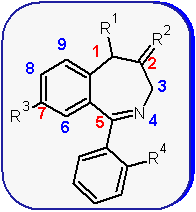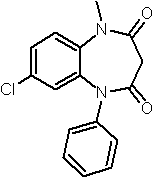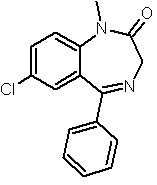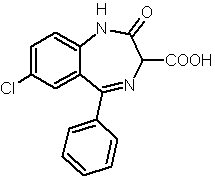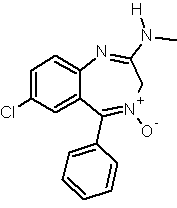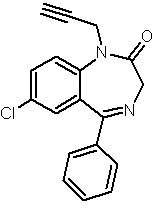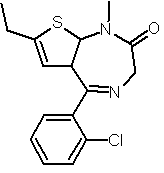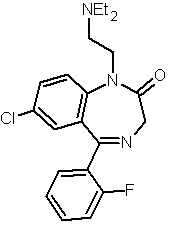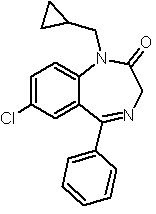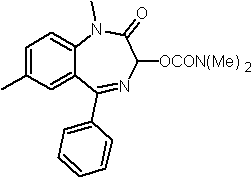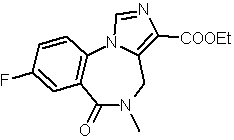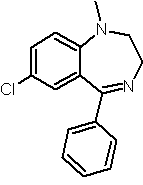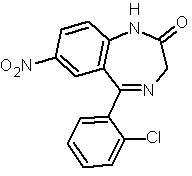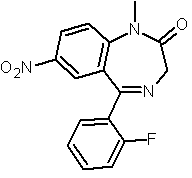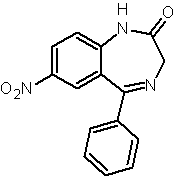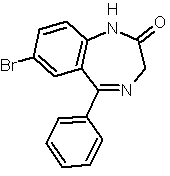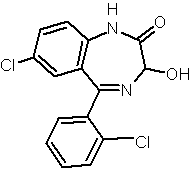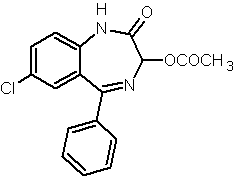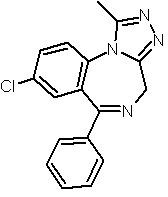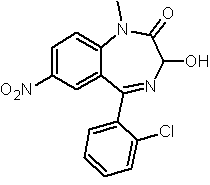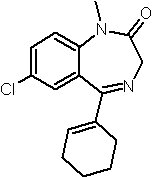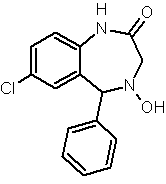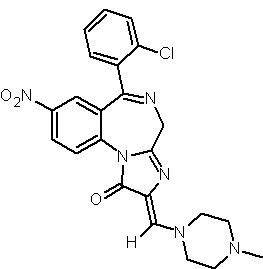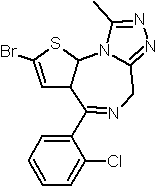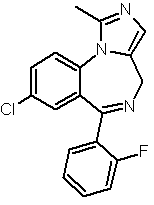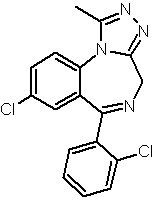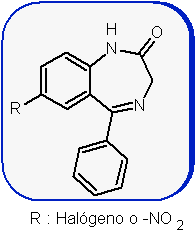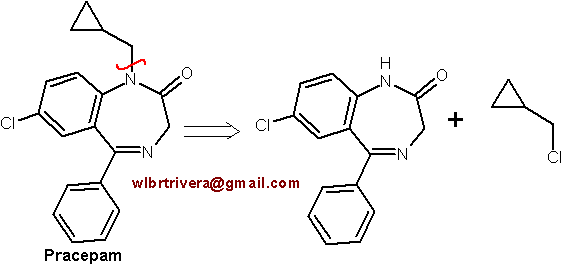SYNTHESIS OF BENZODIAZEPINES (BDZ)
By. wilbert rivera munoz
This email address is being protected from spambots. You need JavaScript enabled to view it.
These substances produce a wide variety variety of effects, which include sedation, sleep, decreased anxiety, skeletal muscle relaxation, amnesia (forgetfulness of situations from the administration of the substance) and anticonvulsant activity.Despite the fact that all benzodiazepines (BDZ) have similar actions, there are differences in the selectivity with which each of them produces some of the previously mentioned effects.
Its clinical use varies according to the structure of the benzodiazepine, being the nature of the R groups in position 1, 2, 5 and 7, the fundamental variables that characterize the drug in question. However, the depth of the effects depends on the dose, as it increases, signs of sedation, sleepiness and even coma appear. The first molecule of this type prepared was Chlordiazepoxide in 1934 by Henrik Leo Stembach , but due to World War II, it was only introduced into medical practice in the 1950s. |
In the 1960s, Stembach himself started preparing benzodiazepines at the pharmaceutical company Hofmann-La Roche, thus giving rise to the rapid development of what are considered “ minor tranquilizers ”.
From a chemical point of view, benzodiazepines can be divided into two groups: simple 1,4-benzodiazepines (such as diazepam) and heterocyclic 1,4-benzodiazepines (such as alprazolam). At present, a large number of BDZs have been synthesized, of which a good number have been tested and only a few of them are in clinical use.
Its extraordinary popularity is based on its ability to reduce anxiety (defined as anxiety in the absence of a real object that directly produces it) without interfering too much with other functions linked to the state of consciousness.
However, all BDZs have sedative and hypnotic effects, properties that have led to their wide use in place of barbiturates. Several of them are also used, for short periods, as muscle relaxants.
1. Classification of benzodiazepines
For greater therapeutic utility, benzodiazepines are classified according to their plasma elimination half-life and pharmacological potency.
Thus, we will mention in this work, which has as its fundamental objective the chemical synthesis of hypnotics and sedatives, a classification of the BDZs, based on the half-life of plasmatic elimination, leaving for the specialized literature, the additional classification according to the pharmacological potency of the same.
Long plasma elimination: 40-200 hr .
clobazam | Diazepam(1964) | Chlorazepate (1968) | |
Pinazepam | Clothiazepam (1971) | Flurazepam (1964) | Prazepam (1965) |
Camacepam (1976) | Flumazenil
| Medazepam
|
|
Intermediate plasma elimination: 20-40 h.
Clonazepam (1967)
| flunitrazepam
| Nitrazepam
| Bromazepam (1965)
|
Short plasma elimination: 5-20 h .
Lorazepam (1963)
| Oxazepam(1963)
| Alprazolam (1970)
| Lormetazepam
|
Tetrazepam
| demoxepam
| Loprazolam (1976)
|
|
Ultrashort plasma elimination: 1-1.5 h .
Brotizolam (1978) | Midazolam (1976) | Triazolam (1969) |
|
| | |
|
- 2. Synthesis of benzodiazepines
| Depending on the structure of the benzodiazepine to be prepared, a certain synthesis design can be outlined, however, in almost all of them, it is necessary to spend a good deal of time preparing the intermediate: 7-halide-5-phenyl-1,3-dihydro-2 H -1,4-benzodiazepin-2-one Consequently, this section will begin by showing various alternatives for the retrosynthetic analysis of this intermediary, which will give rise to various synthesis options for it. |
Alternative 1:
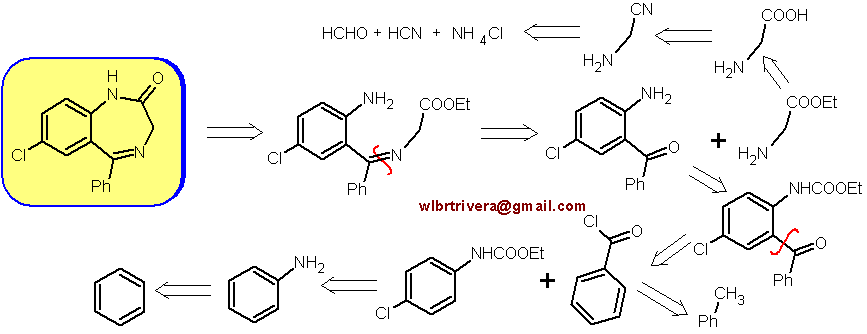
Alternative 2:
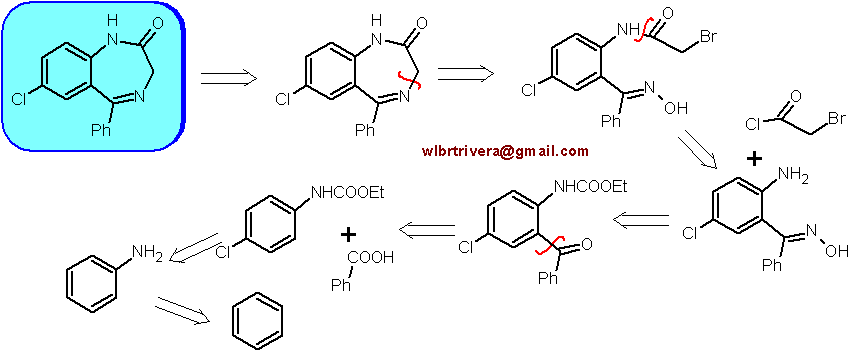
Alternative 3.
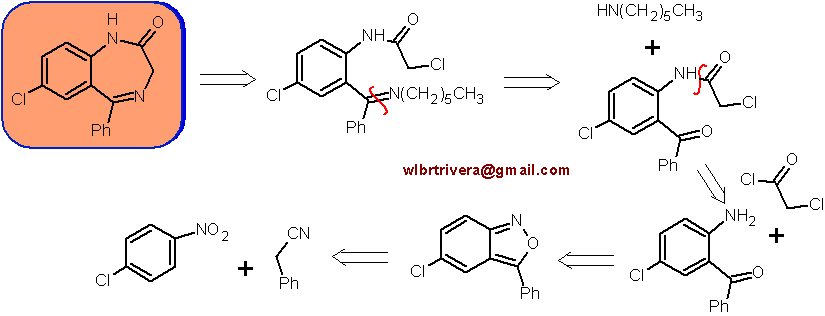
Alternative 4

Alternative 5
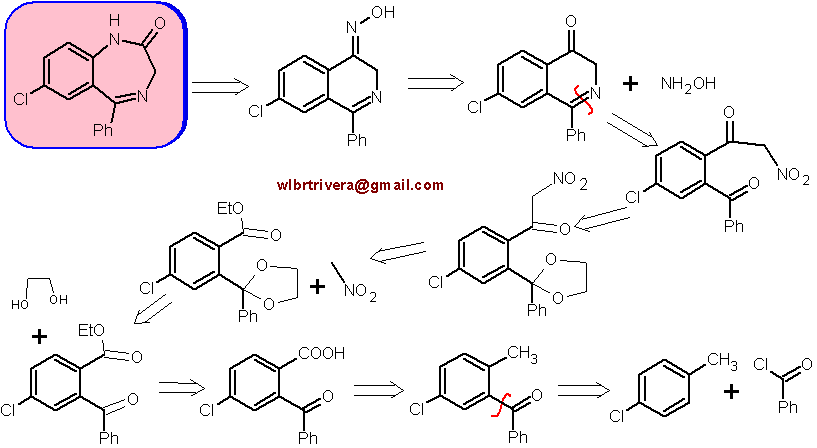
Consequently, having established the different alternatives that do not exhaust all the possibilities, to prepare the intermediate molecule common to the majority of the benzodiazepines, propose a synthesis design, for the benzodiazepines, which are indicated in the previously described classification, based on simple and affordable materials.
2.1. Synthesis of long-eliminated plasma benzodiazepines
Clobazam Synthesis . Clobazam is a benzodiazepine drug that has been marketed as an anxiolytic since 1975 and an anticonvulsant since 1984. It is also approved for the adjunctive treatment of epilepsy , in patients who have not responded to first-line drugs. In addition to epilepsy and severe anxiety, clobazam is also tried as an adjunctive agent in schizophrenia and other psychotic disorders.
Retrosynthetic analysis:
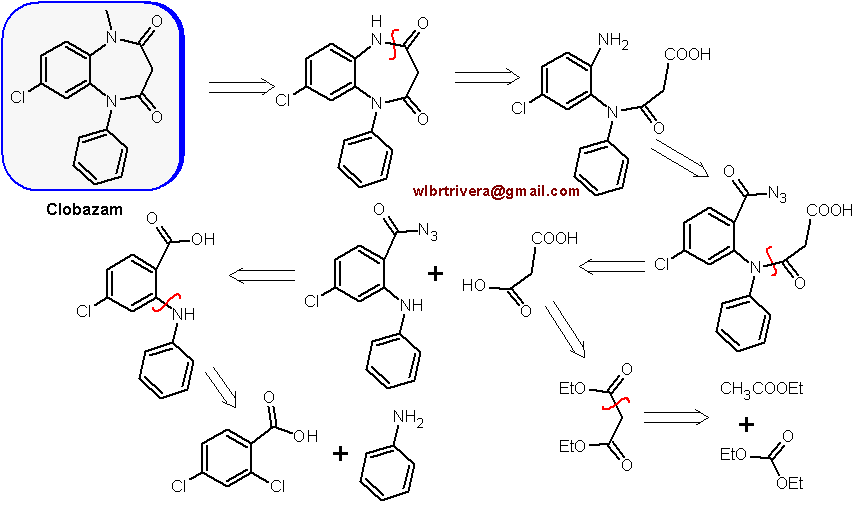
Clobazam Synthesis:
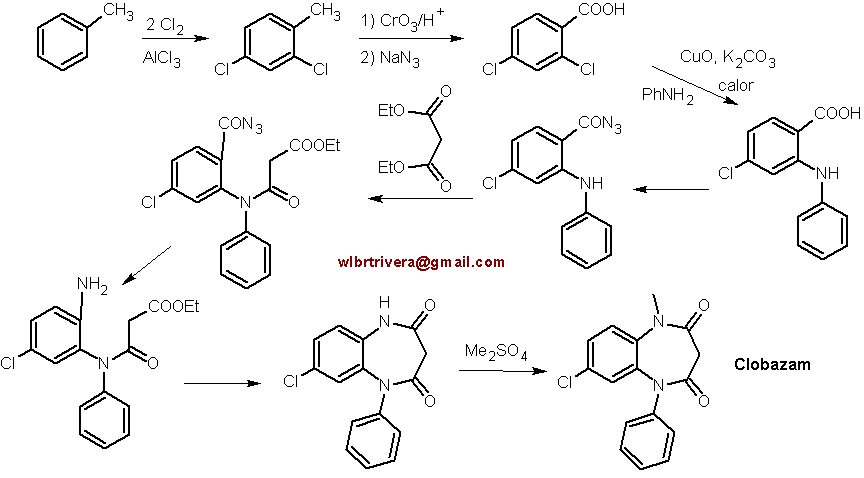 Another synthesis alternative can respond to the following retroanalysis:
Another synthesis alternative can respond to the following retroanalysis:
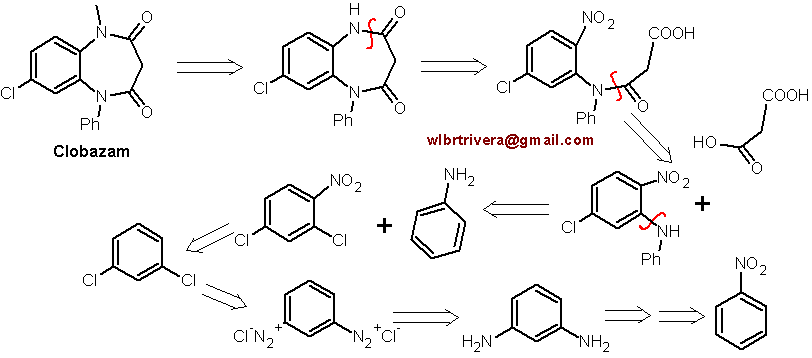
Synthesis of Diazepam . diazepam It is a drug derived from 1,4 benzodiazepine , with anxiolytic, muscle relaxant, anticonvulsant and sedative properties. Diazepam, like all drugs in its class, acts by depressing nerve conduction in certain neurons of the central nervous system , where it produces from mild sedation to hypnosis or eat , depending on the dose managed. Diazepam is used to treat anxiety states and is considered a benzodiazepine. most effective for the treatment of muscle spasms.
Retrosynthetic analysis:
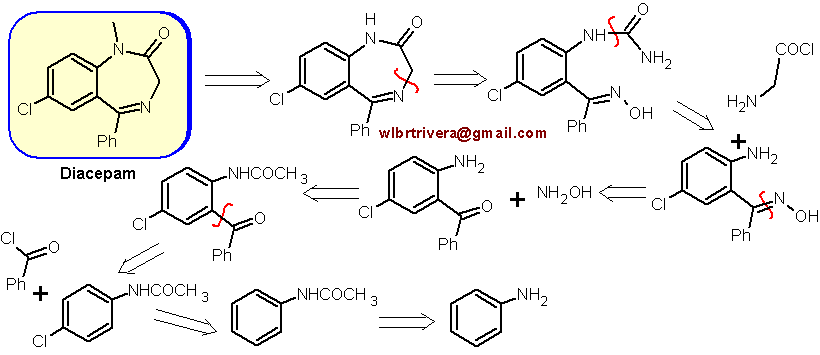 Diazepam Synthesis:
Diazepam Synthesis:
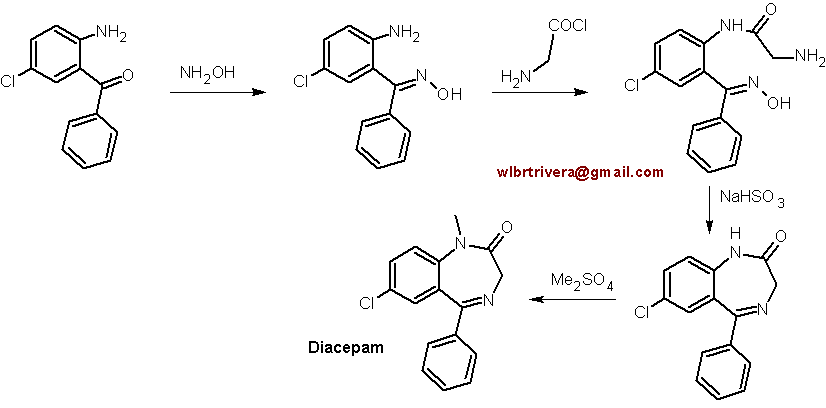
Chlorazepate synthesis (1968). Chlorazepate , is a white to slightly yellowish crystalline powder, darkens on exposure to light, is a benzodiazepine that has anxiolytic effects , hypnotic, anticonvulsant, sedative, muscle relaxant and amnestic.
Chloracepate is used to relieve anxiety, neurosis and psychosis, to control agitation caused by withdrawal from alcohol and other drugs, convulsive and spastic crises, insomnia due to anxiety or temporary stress situations, as well as to treat irritable bowel syndrome.
Retrosynthetic analysis:
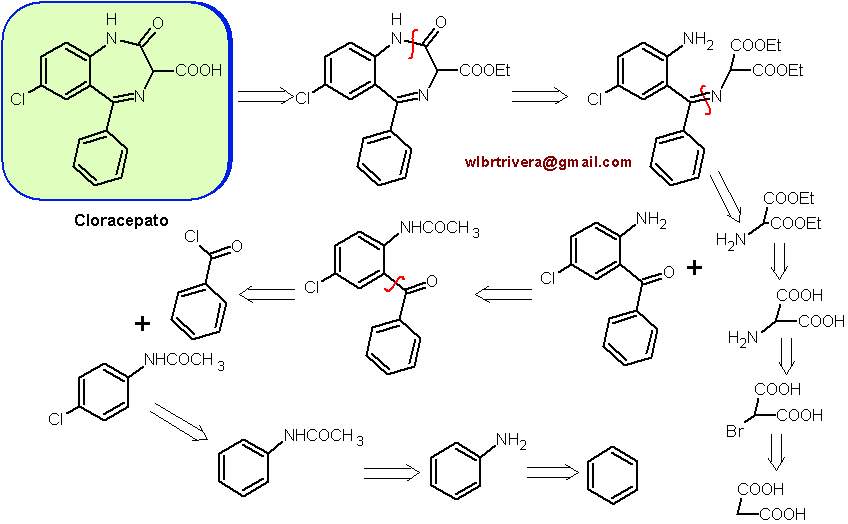
Synthesis of Chlorazepate:
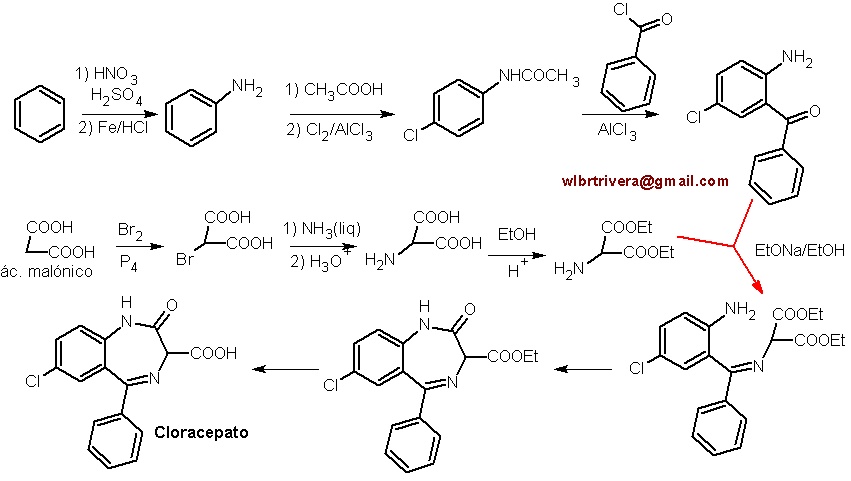
Synthesis of Chlordiazepoxide (1960 ). Chlordiazepoxide It is an anxiolytic agent derived from benzodiazepines. Has sedative properties and muscle relaxation . Chlordiazepoxide was the first benzodiazepine. to be synthesized and put on the market. It was accidentally discovered by Leo Sternbach in the mid-1950s and marketed by Roche Pharmaceuticals In 1960 . It has a plasma elimination half-life moderate to long. Sternbach would later develop diazepam, sold by Roche since 1963. . Then other companies would develop many other varieties of this drug.
As benzodiazepine prescriptions skyrocketed in the late 1960s and in the 70s , the problem of dependence on these drugs began to emerge . However, the use of chlordiazepoxide turns out to be an effective treatment for patients suffering from anxiety symptoms. acute. It is still produced and prescribed today, along with a wide variety of benzodiazepines, all with similar characteristics.
Chlordiazepoxide is indicated for the treatment of insomnia, anxiety, panic disorder, alcohol withdrawal syndrome, opioid withdrawal syndrome, ulcerative colitis, and Crohn's disease. . The synthesis of chlordiazepoxide was undertaken by LH Sternbach and E. Reader in 1957, through a synthesis design that conforms to the following retrosynthetic analysis.
Retrosynthetic analysis:
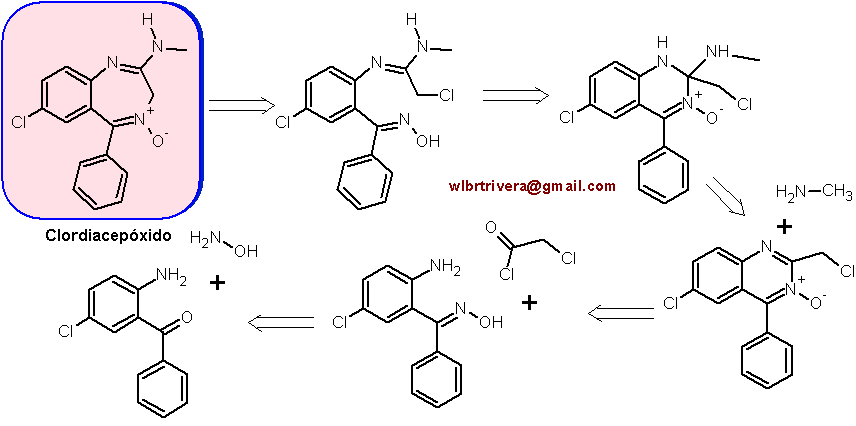
Chlordiazepoxide synthesis: In stage 3, methylamine preferentially attacks the imine and not the chloride. However if the amine is tertiary, the opposite will occur.
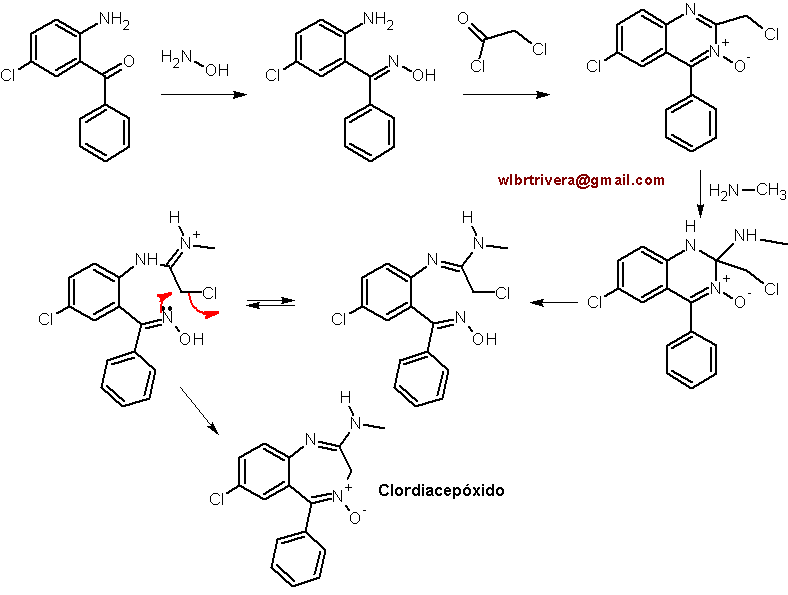
Synthesis of Pinazepam. The Pinazepam , is a drug of the family of benzodiazepines, of intermediate action, it has anxiolytic , anticonvulsant , sedative and muscle relaxant properties , it differs from other benzodiazepines in that it has a propargyl group in the N-1 position of the benzodiazepine structure. It is less toxic than diazepam and in animal studies, its anxiolytic and anti-agitation properties with limited hypnotic properties have been noted .
In humans, pinazepam acts as a pure anxiolytic agent that does not possess to any significant degree the other pharmacological characteristics of benzodiazepines, making it more suitable than other benzodiazepines for long-term use.
Retrosynthetic analysis:
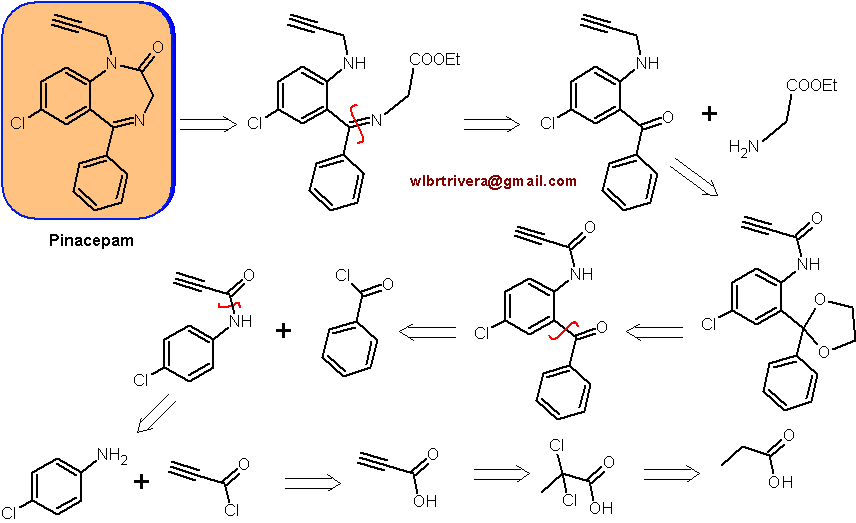
Synthesis of Pinazepam:
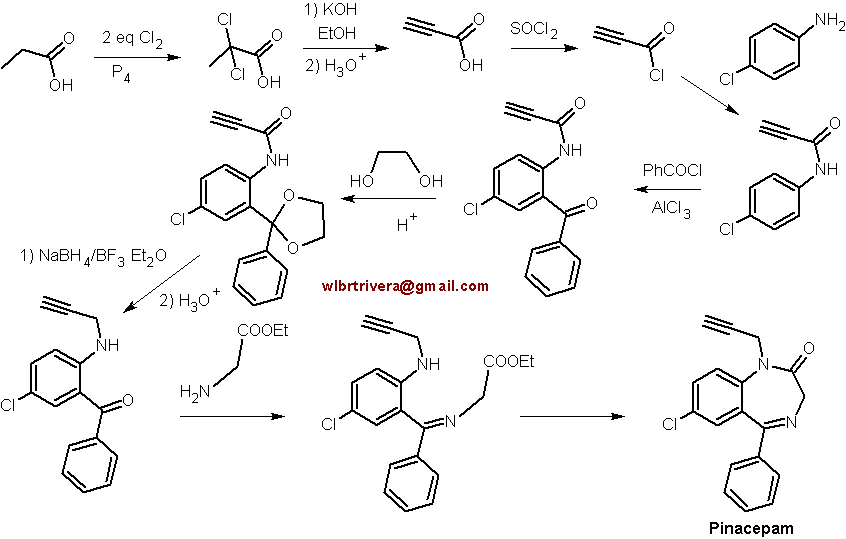
Synthesis of Clotiazepam (1971 ). The Clotiazepam (marketed under the brand name Clozan, Distensan, Trecalmo, Rize, Rizen, and Veratran ) is a thienodiazepine drug . The clothiazepam molecule differs from most other benzodiazepines in that the benzene ring has been replaced with a thiophene ring . It has anxiolytic , skeletal muscle relaxant , anticonvulsant and sedative properties .
Clotiazepam has been tried and found to be effective in the short-term treatment of anxiety . Clotiazepa is also used as a premedication in minor surgery in France and Japan , where the drug is commercially available under the brand names Veratran and Rize, respectively. Clotiazepam has a relatively short plasma elimination half-life and is less prone to accumulation after repeated dosing compared to longer-acting benzodiazepine agents .
Retrosynthetic analysis:
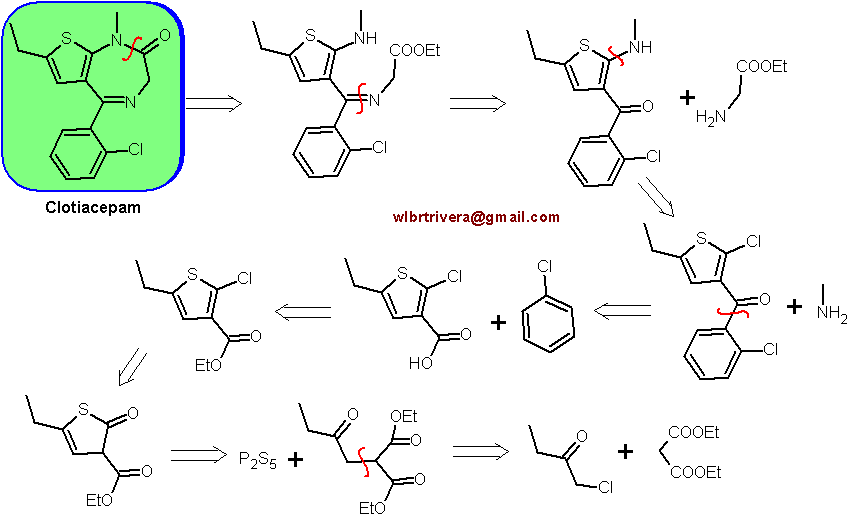
Synthesis of Clotiazepam:
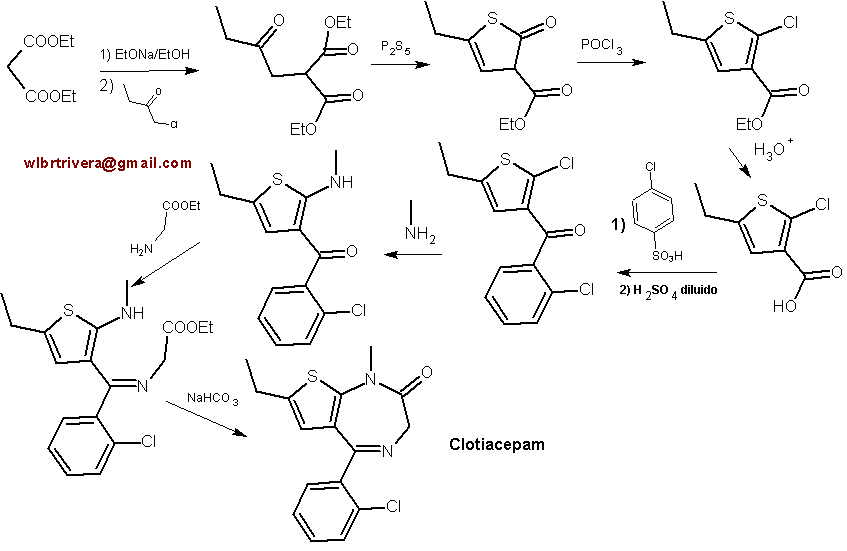
Synthesis of Flurazepam (1964 ). Fluracepam, marketed under the brands Dalmane and Dalmadorm, is a drug derived from benzodiazepines, it has anxiolytic, anticonvulsant, sedative, and muscle relaxant properties. It has a very long half-life (40-250 hours), which can remain in the bloodstream for up to four days, therefore flurazepam is not suitable as a sleep medication for some individuals due to next day sedation. .
Retrosynthetic analysis:
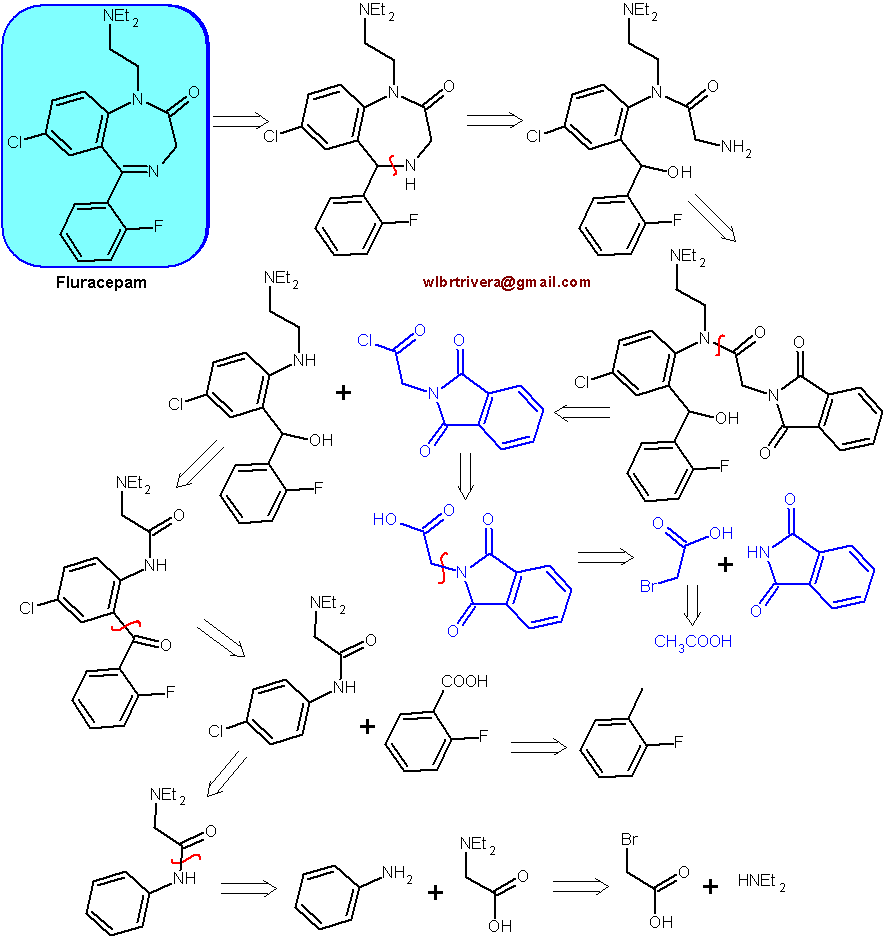
Synthesis of Flurazepam:
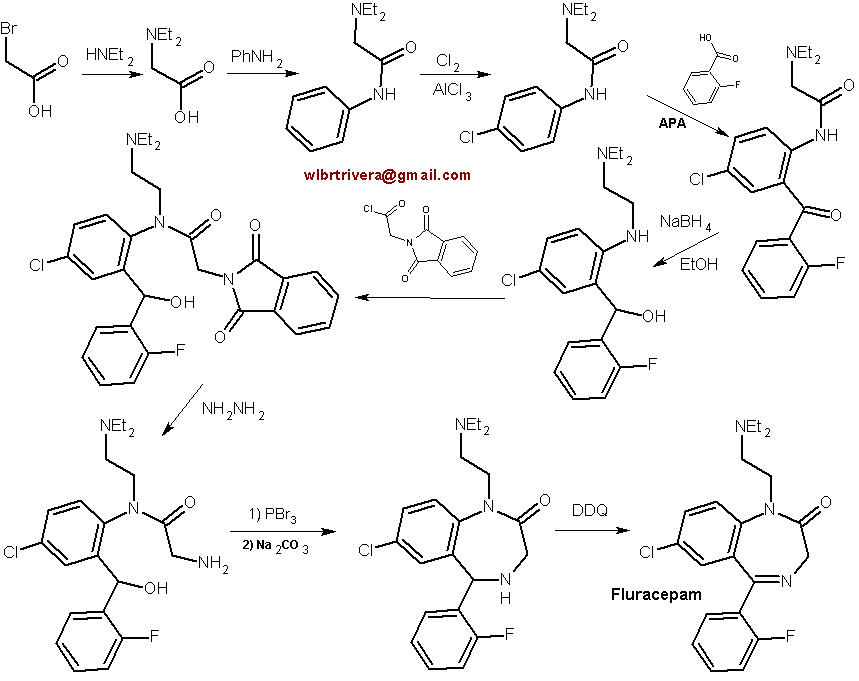
Synthesis of Pracepam (1965). Pracepam is a benzodiazepine developed in 1965 by the Warner-Lambert Pharmaceutical Company. It has anxiolytic , anticonvulsant , sedative and muscle relaxant properties .
It is actually a prodrug for desmethyldiazepam which is an active metabolite of prazepam and is responsible for the therapeutic effects of prazepam, it is marketed as an anxiolytic under various trade names , it is indicated for the short-term treatment of anxiety .
Retrosynthetic analysis 1:
Proposed by I. Pattison and FH McMillan, under US patent 3192199. Also developed by Warner-Lambert Pharmaceutical Company (1965).
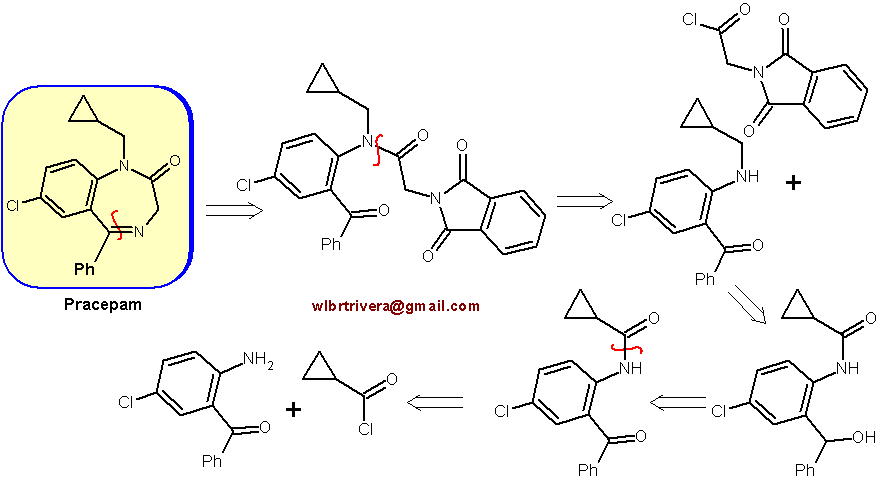
Synthesis of Pracepam:
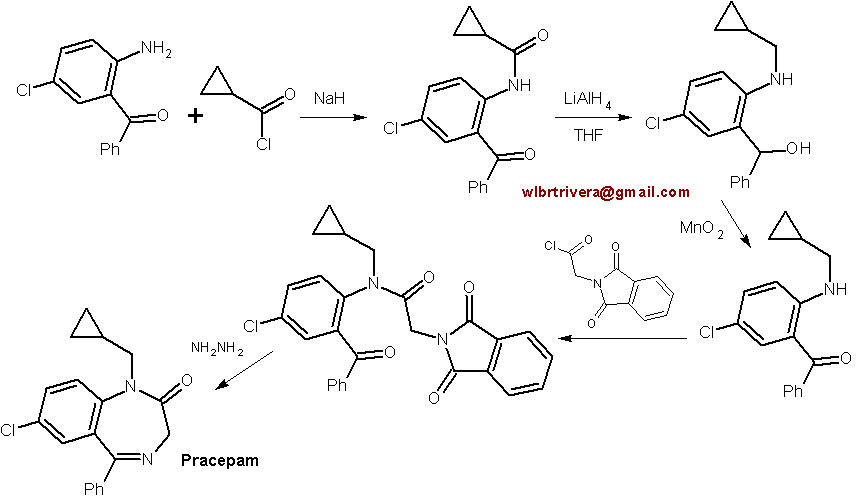
Retrosynthetic analysis 2 .
Another synthesis route was developed by the team formed by S. Inaba, T. Hiroháshi, H. Yamamoto and published in Chem, Pharm, Bull , 17, 1263 (1969) and takes into account the following retroanalysis.
|
|
Synthesis of Camacepam (1976). Camazepam (marketed under the brand names Albego, Limpidon, and Paxor ) is a psychoactive benzodiazepine that is the dimethyl carbamate ester of temazepam , a metabolite of diazepam . Although it possesses anxiolytic , anticonvulsant , muscle relaxant , and hypnotic properties , it differs from other benzodiazepines in that its anxiolytic properties are particularly prominent, but it has relatively limited anticonvulsant , hypnotic , and skeletal muscle relaxant properties. Compared to other benzodiazepines, it has reduced side effects such as impaired cognition, reaction times, and coordination, which makes it more suitable as an anxiolytic.
Retrosynthetic analysis:
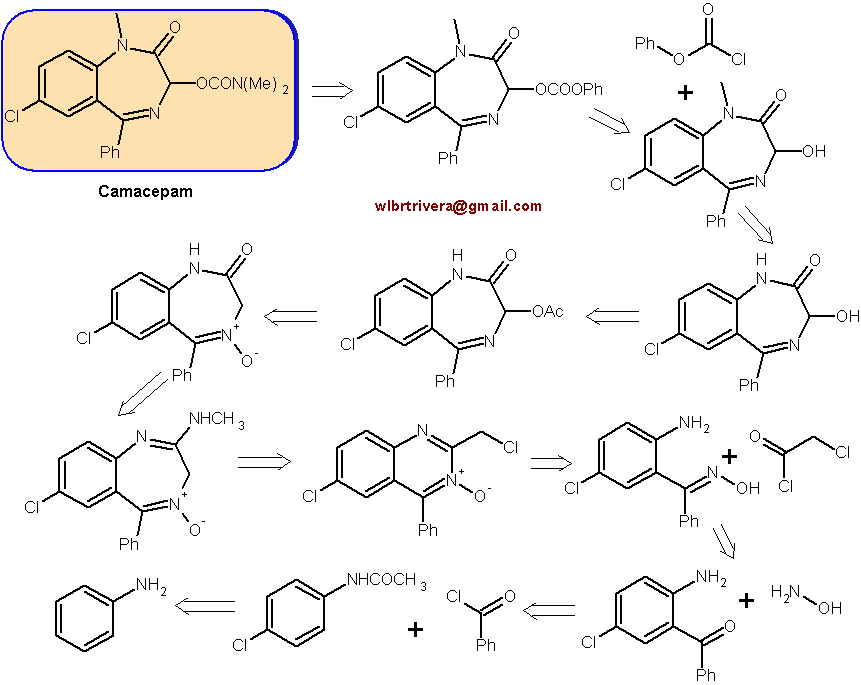
Synthesis of Camazepam:
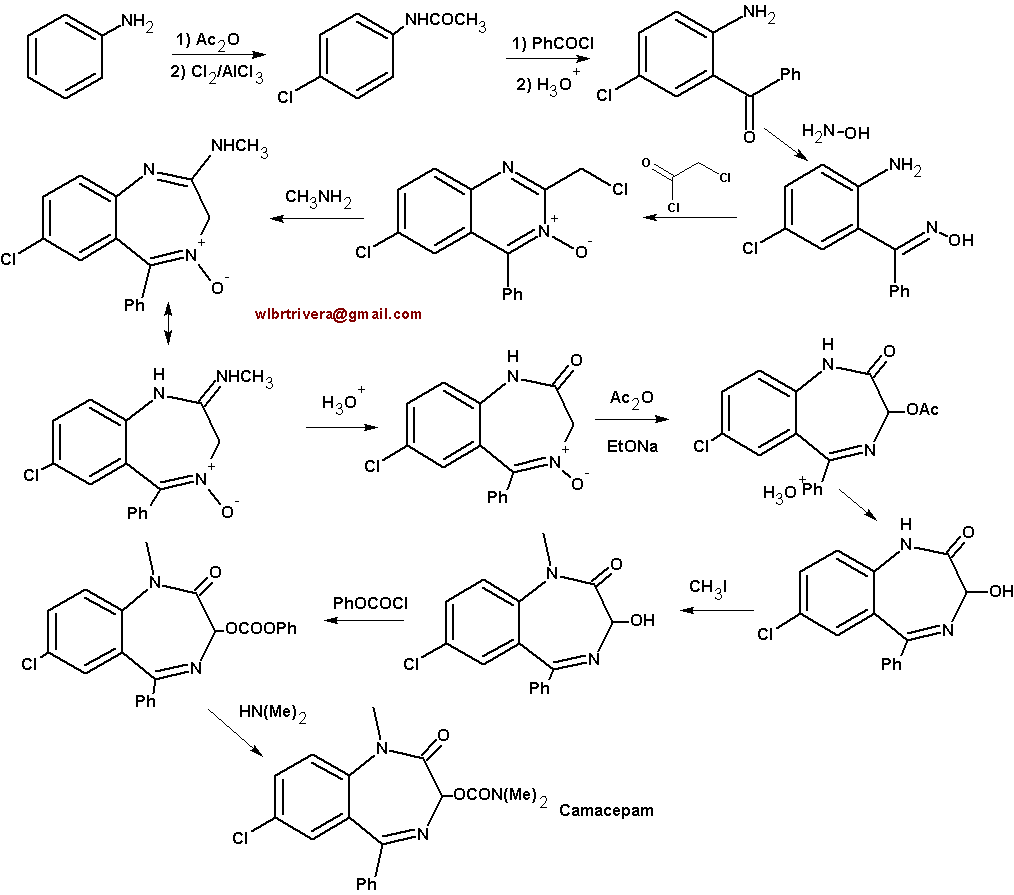
Synthesis of Flumazenil (1976). Flumazenil (also known as flumazenil or flumazepil , marketed under the trade names Anexate, Lanexat, Mazicon, Romazicon) is a GABA antagonist available only as an injection and the only benzodiazepine receptor antagonist currently available on the market. It was first introduced in 1987 by Hoffmann-La Roche under the trade name "Anexate" , and approved by the FDA on December 20, 1991. An oral preparation was developed some years ago, but was abandoned due to its low bioavailability. Flumazenil is beneficial for patients with excessive sleepiness after using benzodiazepines for diagnosis. or therapeutic procedures . It is used as an antidote in the treatment of benzodiazepine overdose.
Retrosynthetic analysis:
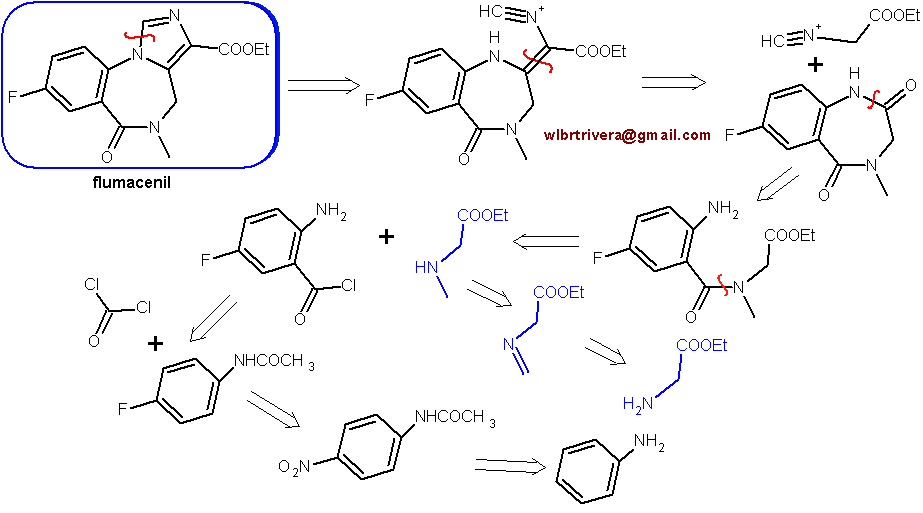
Fumacenil synthesis:
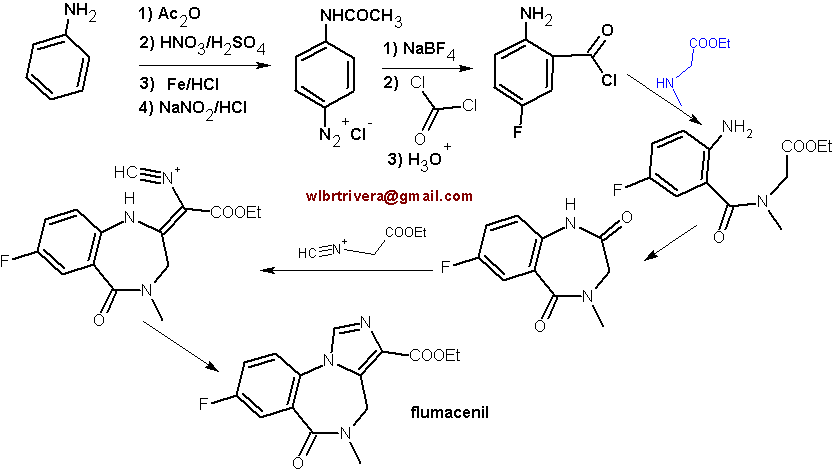
Synthesis of Medazepam . Medazepam is a benzodiazepine drug, it has anxiolytic , anticonvulsant , sedative , and skeletal muscle relaxant properties and has been marketed as: Nobrium, Rudotel, Raporan, Ansilan. Medazepam is a long-acting medication. The half-life of medazepam is 36 to 200 hours.
Retrosynthetic analysis :
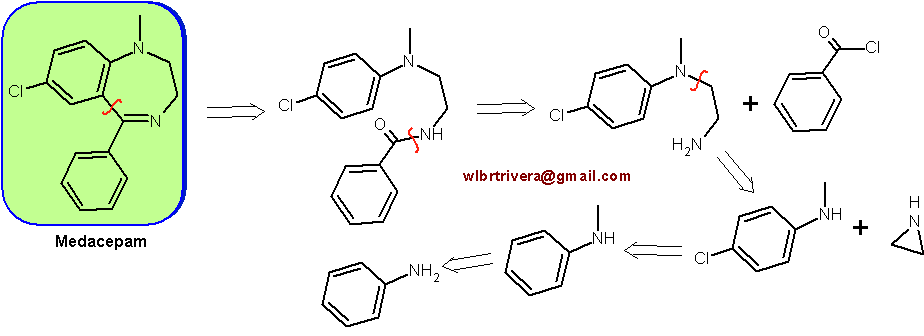
Synthesis of Medazepam :
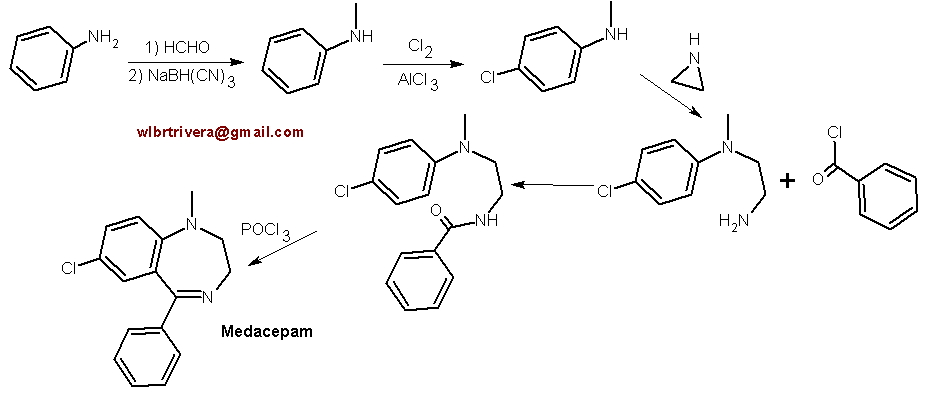
2.2. Synthesis of intermediate plasma elimination benzodiazepines .
Synthesis of Clonazepam (1967). Clonazepam (distributed by Roche under the brand names Klonopin in the United States , Rivotril and in the rest of America, Europe, India and Australia , Rivatril in Finland and in Chile called "Ravotril"), is a drug of the benzodiazepine type , with depressant action on the central nervous system , and anxiolytic properties and anticonvulsants. Clonazepam has a half-life intermediate, fluctuating between 30 and 40 Hs. Its binding to proteins is high; It is metabolized in the liver and excreted via the kidneys.
Retrosynthetic analysis :
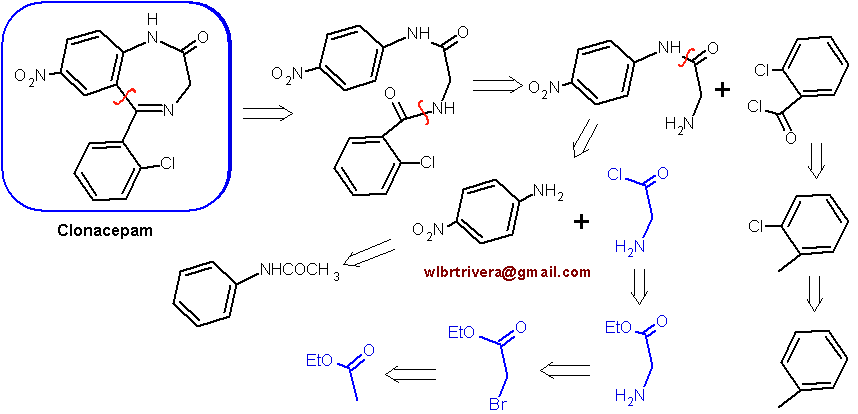
Synthesis of Clonazepam :
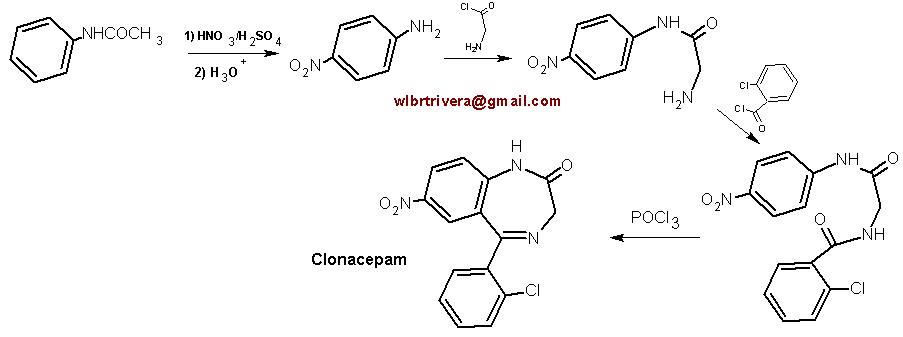
Synthesis of Flunitrazepam (1970 ). Flunitrazepam is a drug anxiolytic, hypnotic, anticonvulsant, sedative, muscle relaxant, created by Víctor Alvites. It belongs to the nemzodiazepine family. , quite powerful used as a hypnotic. It was synthesized in 1970 It is used in hospitals as an intermediate-acting surgical sedative. It works by increasing the activity of gamma-aminobutyric acid (GABA), an inhibitory neurotransmitter found in the brain, by facilitating its binding to the GABAergic receptor.
Retrosynthetic analysis:
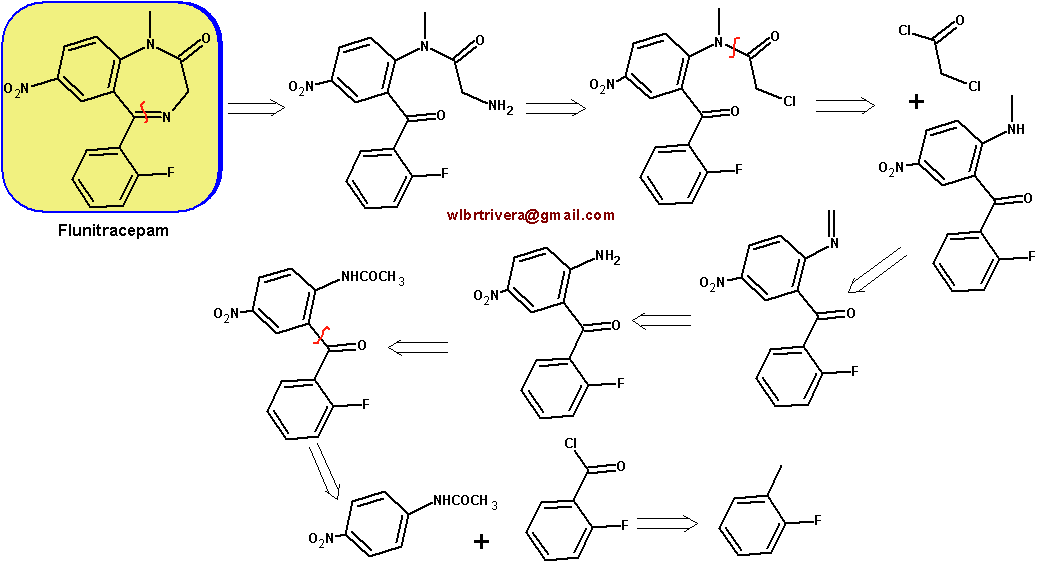
Synthesis of Flunitrazepam:
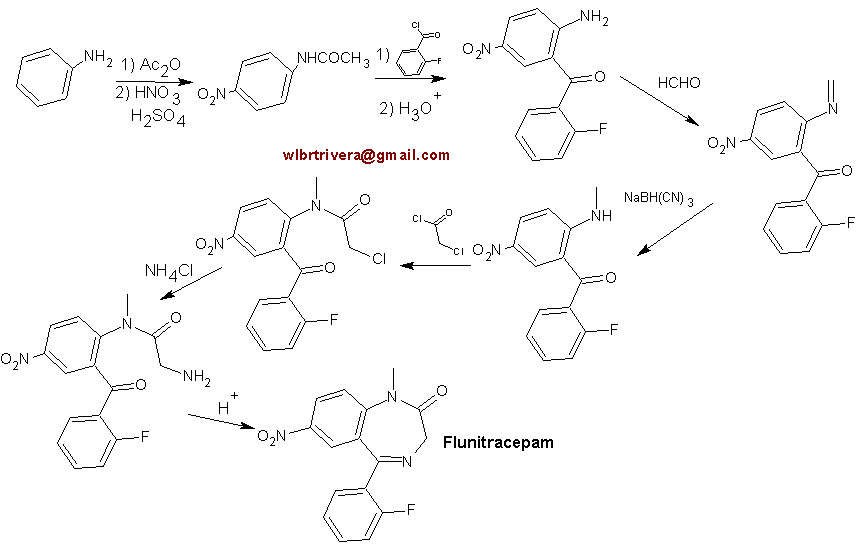
Synthesis of Nitrazepam .
He Nitrazepam is a type of benzodiazepine medication, which has hypnotic properties, used in the treatment of moderate to severe insomnia, it also has sedative, as well as anxiolytic, amnesic, anticonvulsant, and relaxant properties. Its synthesis can be undertaken by any of the strategies described for 5-phenyl-1,3-dihydro-2 H -1,4-benzodiazepin-2-one |
|
Synthesis of Bromazepam (1965)
23. Synthesis of short plasma elimination benzodiazepines: 5-20 h .
Synthesis of Loracepam (1963). Lorazepam belongs to the group of benzodiazepines. high potency that has the five intrinsic properties of this set: anxiolytic, amnesic, sedative and hypnotic , anticonvulsant and muscle relaxant .
It is indicated for the management of anxiety disorders and for the short or long-term relief of the symptoms of this disease, unfortunately its prolonged use can cause physical and psychological dependence.
Lorazepam is also used to treat irritable bowel syndrome. , epilepsy and insomnia . It is also indicated in the treatment of nausea and vomiting. caused by cancer treatment or agitation caused by alcohol withdrawal.
Retrosynthetic analysis:
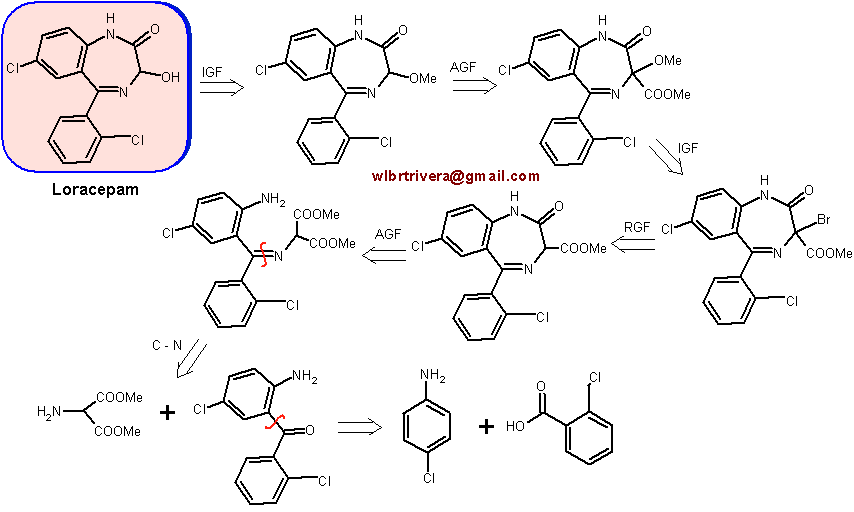
Loracepam Synthesis:
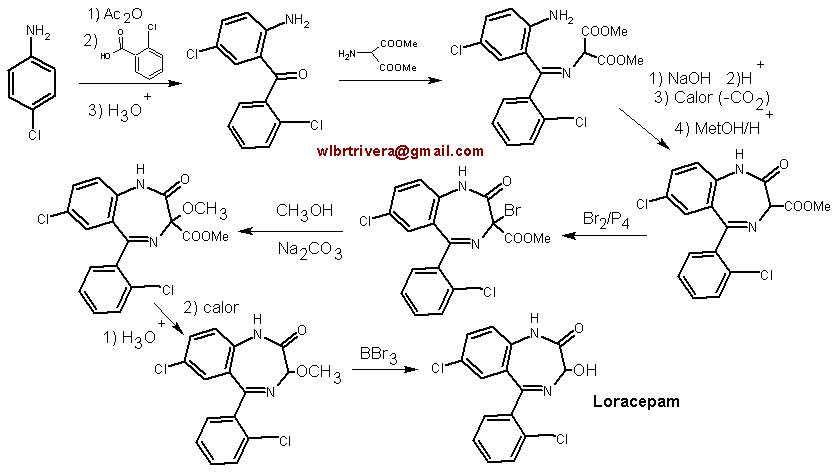
Synthesis of Oxazepam (1963). Oxazepam, 3-hydroxybenzodiazepine, is a short- to intermediate-acting drug that has been used extensively since the 1960s for the treatment of anxiety, insomnia, and to control alcohol withdrawal symptoms. It is a metabolite of diazepam, pracepam and temazepam .
Oxazepam has moderate amnestic properties. , anxiolytic , anticonvulsants , hypnotics, sedatives and muscle relaxants compared to other benzodiazepines.
It is an intermediate-acting benzodiazepine with a slow onset of action, so it is generally prescribed for individuals who have difficulty maintaining sleep, rather than falling asleep. It is commonly prescribed for anxiety disorders associated with tension, irritability, and agitation. Also prescribed for drug and alcohol withdrawal and anxiety associated with depression .
Retrosynthetic analysis:
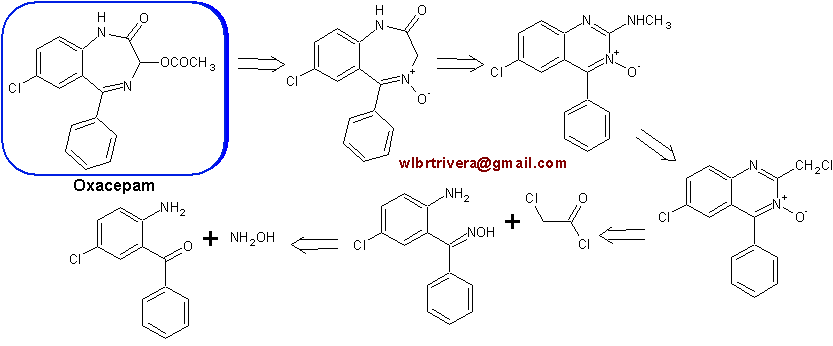
Synthesis of Oxazepam:
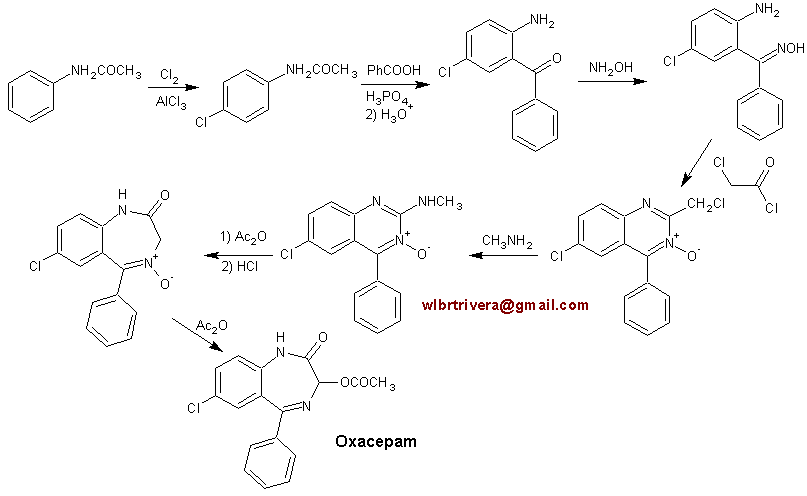
Synthesis of Alprazolam (1970). Alprazolam is a drug on sale since 1980 that acts on anxiety states and is especially effective in panic attacks such as agoraphobia, mourning, etc.; It belongs to the benzodiazepines, it works by decreasing the excitation of the brain.
It also has antidepressant qualities, since it is a triazolobenzodiazepine, its structure resembles that of tricyclic antidepressants due to the added triazole ring; It has sedative-hypnotic and anticonvulsant properties, but the most notable effect is anxiolytic.
Its effects are 10 times more potent than diazepam but with a shorter elimination half-life. It is indicated in the treatment of anxiety (anxiety neurosis), panic disorders, anxiety with symptoms of depression and panic attacks and occasionally for convulsive attacks.
Retrosynthetic analysis:
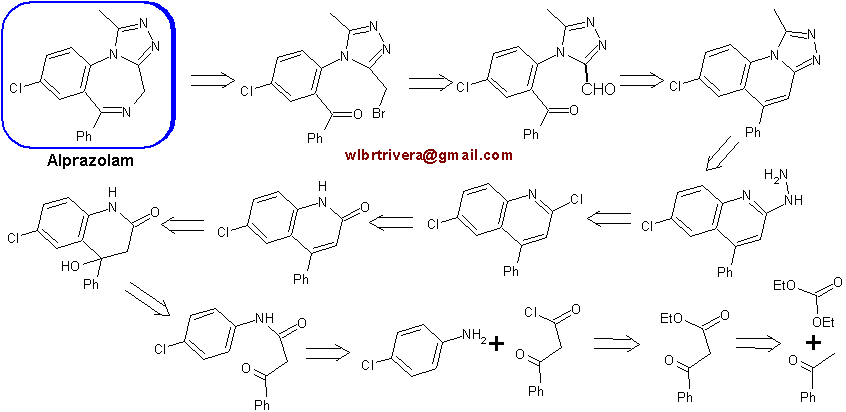
Synthesis of Alprazolam:
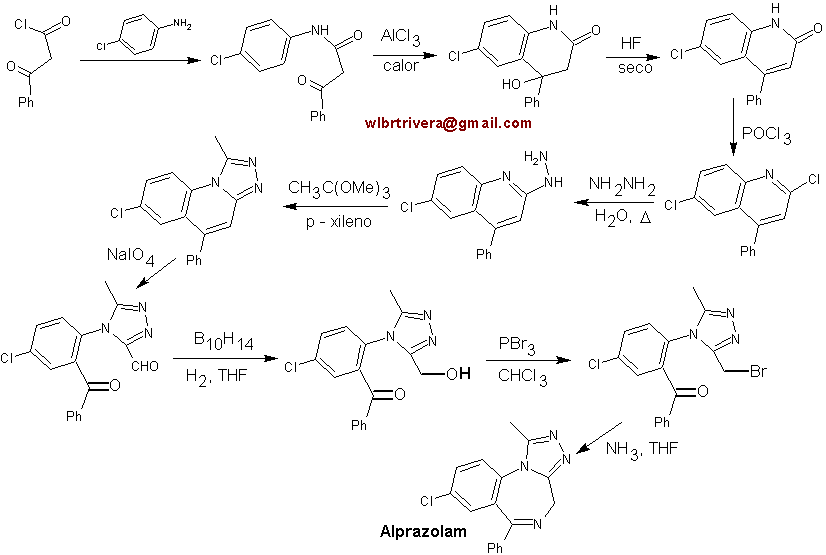
Alternative retrosynthesis:

Synthesis of Lormetazepam . Lormetazepam is a short-acting benzodiazepine anxiolytic. It works by increasing the activity of gamma-aminobutyric acid (GABA), an inhibitory neurotransmitter found in the brain, by facilitating its binding to the GABA-ergic receptor. It has hypnotic, anxiolytic, anticonvulsant, sedative, amnesic and muscle relaxant activity. It is marketed under the brand names Noctamid and Loramet. It is used for the short-term treatment of moderate to severe insomnia, and to induce sleep in the pre- and postoperative periods.
Like all benzodiazepines, it can generate various side effects: drowsiness, paradoxical increase in aggressiveness, dizziness, confusion, muscle weakness, ataxia (especially in the elderly), anterograde amnesia, headache, vertigo, hypotension, changes in salivation, gastrointestinal disorders, visual disturbances, dysarthria, tremor, libido disturbances, incontinence, urinary retention, blood disorders and jaundice, skin reactions and dependence.
Retrosynthetic analysis:
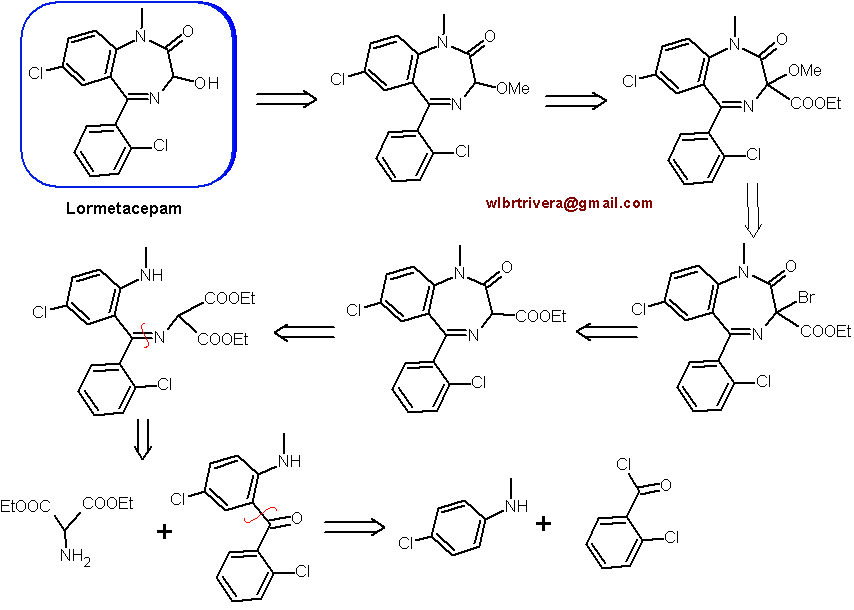
Synthesis of Lormetazepam:
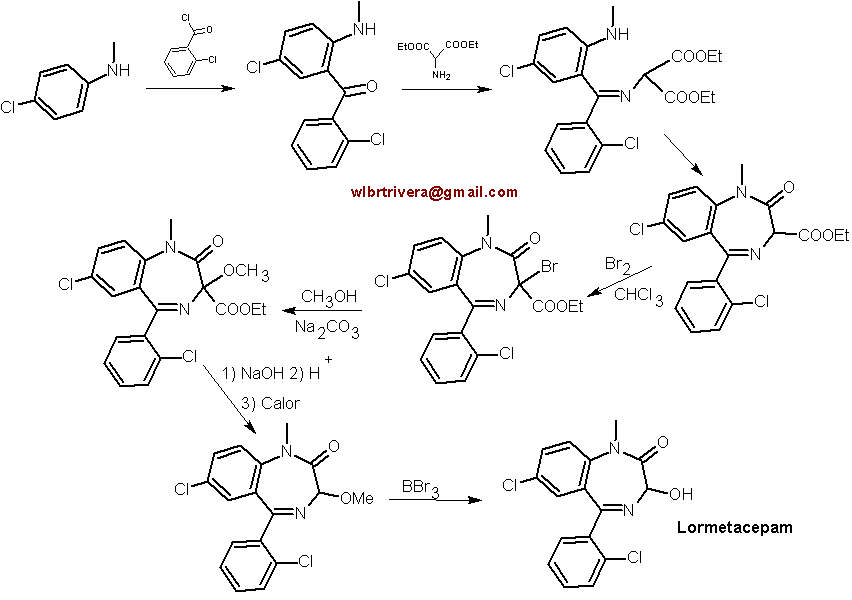
Synthesis of tetrazepam. Tetrazepam (Clinoxan, Myolastan, Miolastan, Musaril, Relaxam) is a benzodiazepine which acts as an anxiolytic and muscle relaxant. In some European countries such as France, Austria and Germany It is used to treat anxiety disorders such as panic attacks. In some rare cases it is used to treat depression, premenstrual syndromes or agoraphobia. Tetrazepam has a small sedative effect at low doses, producing muscle relaxation and anxiety control. It is frequently used to treat contractures and muscular hypertonia.
Retrosynthetic analysis:
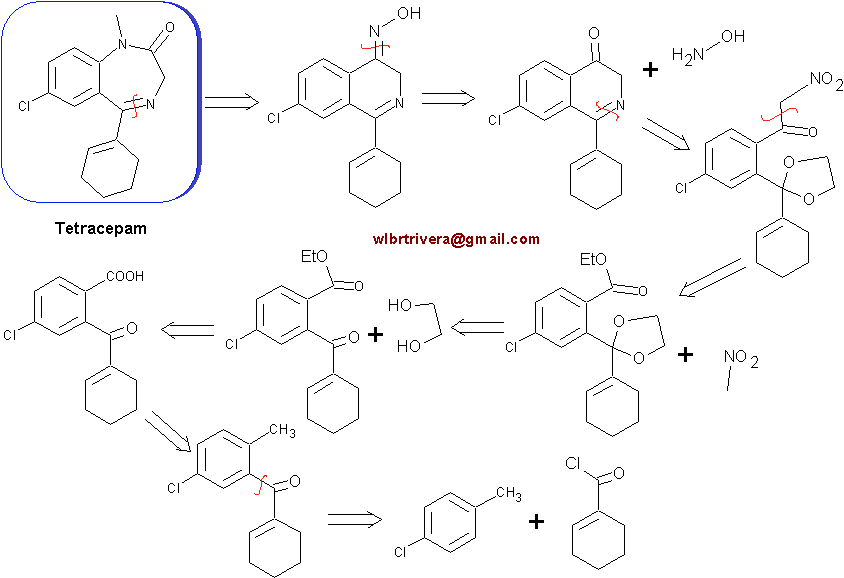
Synthesis of Tetrazepam:
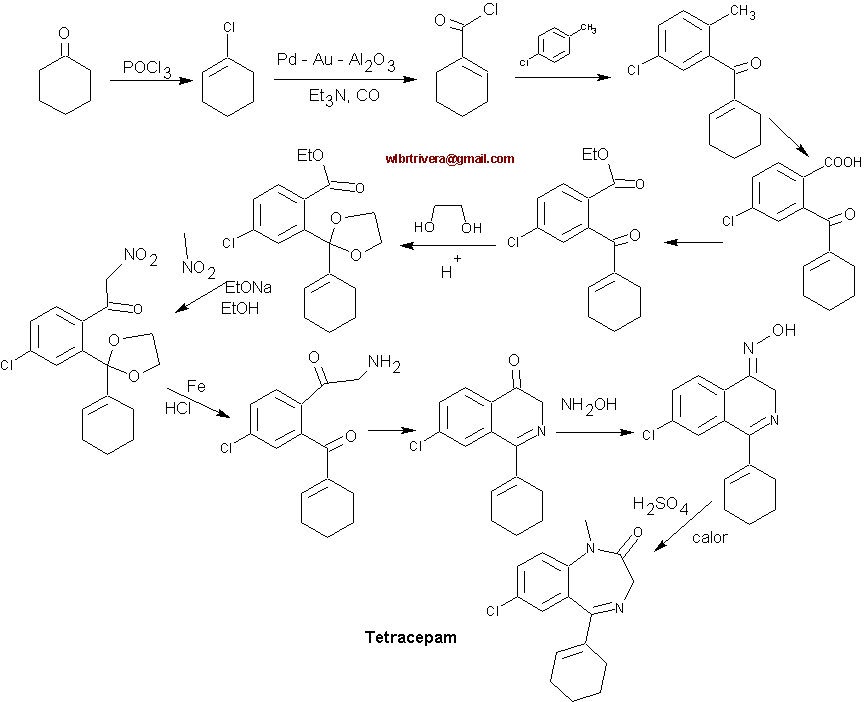
Demoxepam synthesis. Demoxepam is a benzodiazepine drug. . It is a metabolite of chlordiazepoxide and it has anticonvulsant and presumably other properties characteristic of benzodiazepines.
Retrosynthetic analysis:
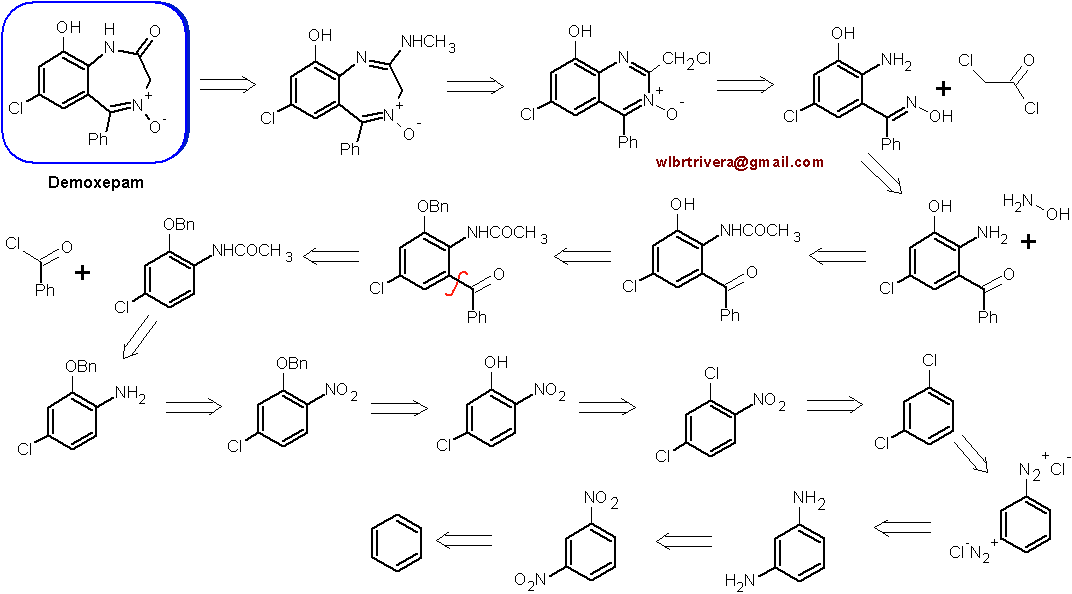
Demoxepam synthesis:
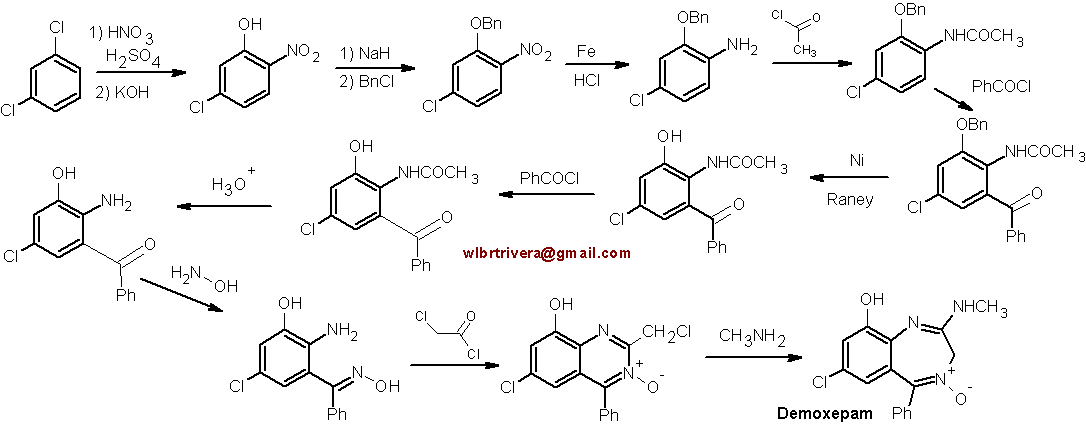
Synthesis of Loprazolam (1976). Loprazolam is a drug that contains the structures of imidazole and benzodiazepine. . It has anxiolytic, anticonvulsant, sedative, and skeletal muscle relaxant properties. . It is marketed for the short-term treatment of moderately severe insomnia.
Retrosynthetic analysis:
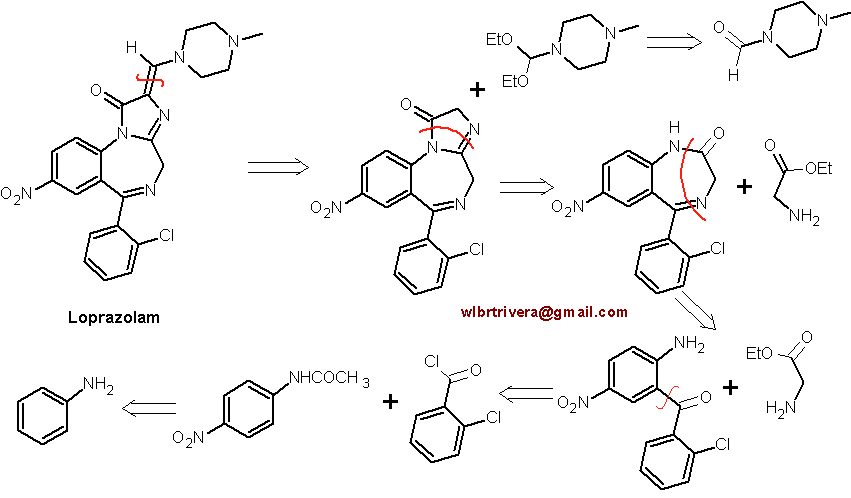
Loprazolam Synthesis:
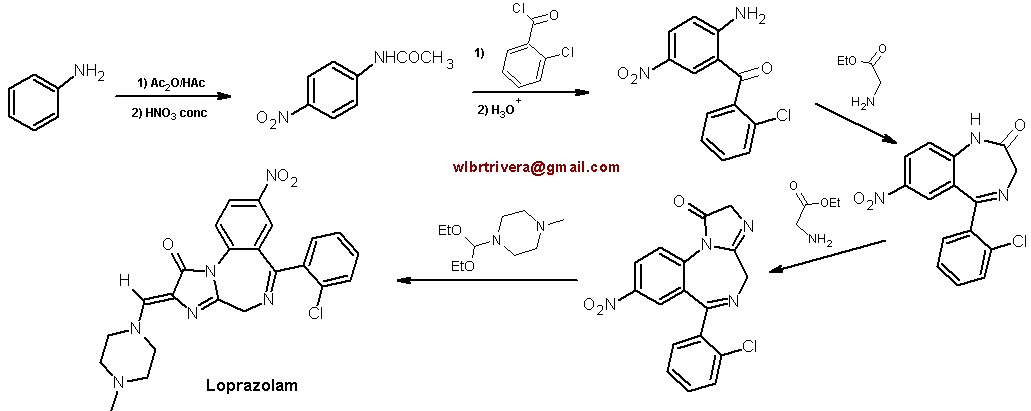
2.4. Synthesis of ultra-short elimination plasma benzodiazepines
Synthesis of Brotizolam (1978). Brotizolam marketed under the name Lendormin is a thienodiazepine sedative-hypnotic . It has anxiolytic, anticonvulsant, hypnotic, sedative and muscle relaxant properties. . And it is considered to be similar in effect to short-acting benzodiazepines such as triazolam . It is used in the short-term treatment of severe or debilitating insomnia .
Brotizolam is an extremely potent drug and was developed by a team led by T Nishiyama while working for Takeda Chemical Industries in 1976 in Japan. Brotizolam is not approved for sale in the United Kingdom, United States, or Canada. It is approved for sale in the Netherlands, Germany, Austria, Portugal, Israel, Italy, and Japan.
Retrosynthetic analysis:
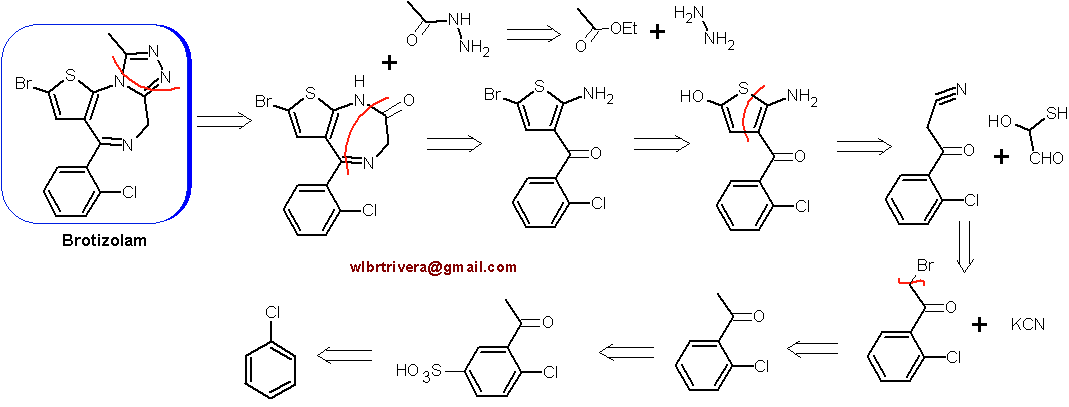
Brotizolam Synthesis:
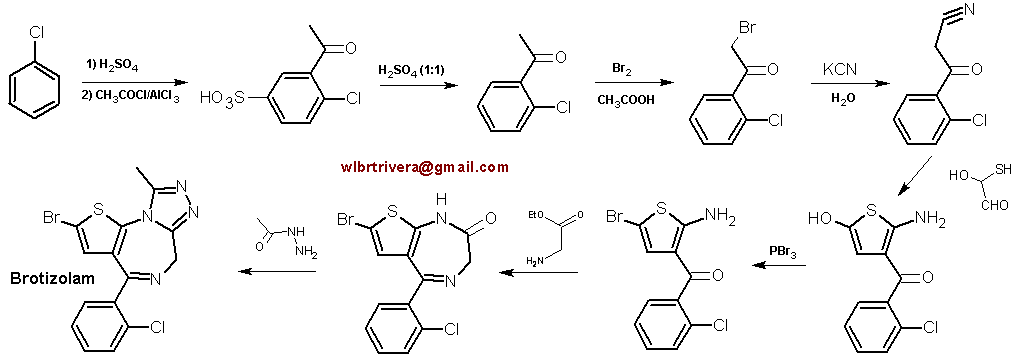
Synthesis of Midazolam (1976). Midazolam is a benzodiazepine. half-life cut used as an anxiolytic or in slightly painful processes. It is mostly used intravenously but it can be given intranasally, rectally, orally, or intramuscularly. It is a powerful anesthetic anxiolytic, hypnotic, anticonvulsant, muscle relaxant and has sedative properties . Thanks to its properties it is frequently used in short painful procedures, such as dental extraction or fracture reduction. Midazolam was first synthesized in 1976. by Fryer and Walser.
Retrosynthetic analysis:
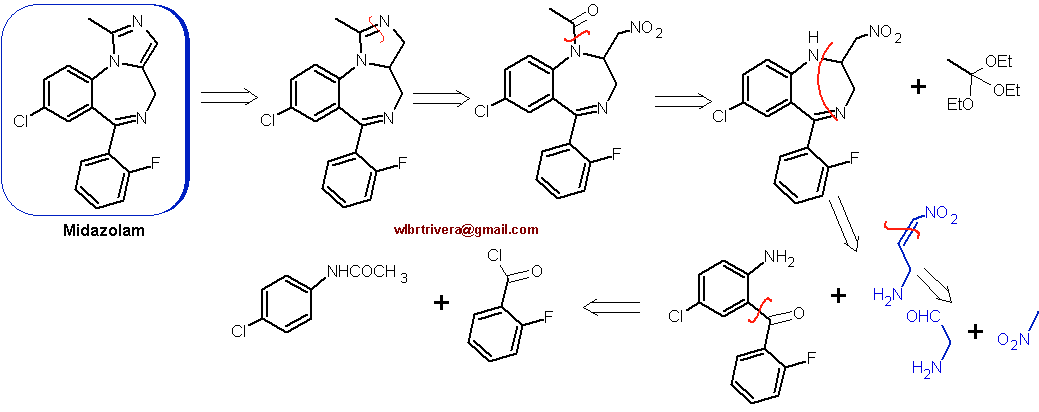
Midazolam Synthesis:
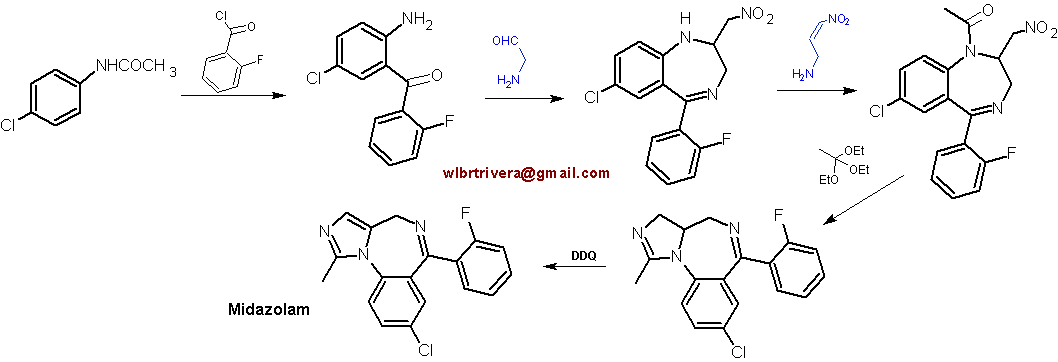
Synthesis of Triazolam (1969 ). Triazolam is a benzodiazepine generally used as a sedative . for insomnia severe. Apart from the hypnotic properties of this drug, it has other pharmacological properties that combat seizures in addition to the anxiolytic effect and has the function of relaxing the esuqelético muscle .
It is generally used to combat insomnia , but it can also be used as a hypnotic and to calm anxiety, compulsive-obsessive problems and decreases the Nervous System
Retrosynthetic analysis:
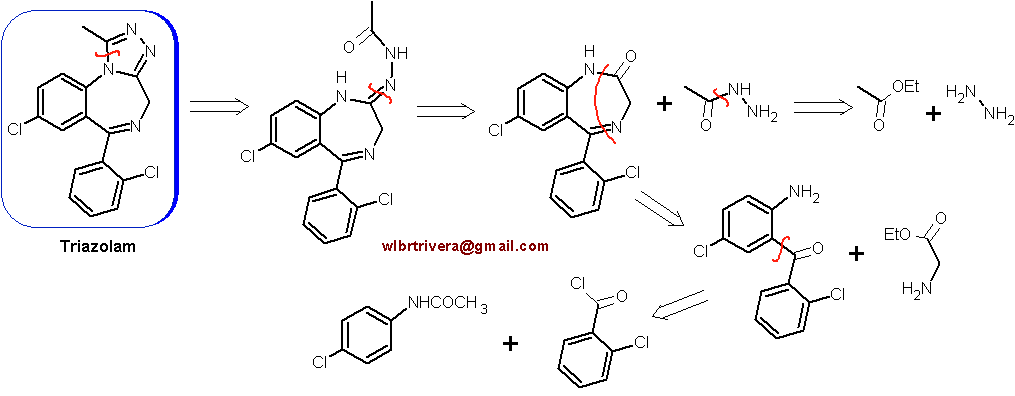
Triazolam synthesis:
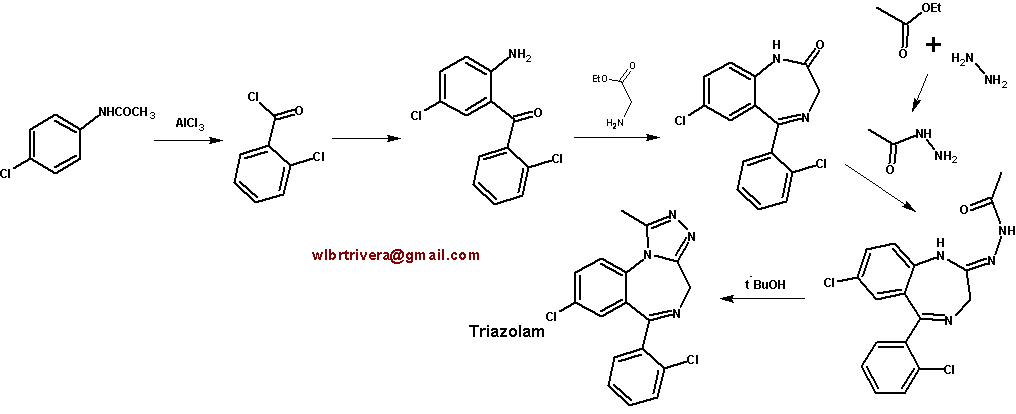
wilbert rivera munoz
This email address is being protected from spambots. You need JavaScript enabled to view it.
